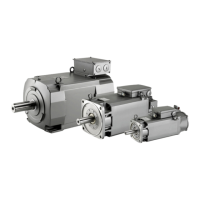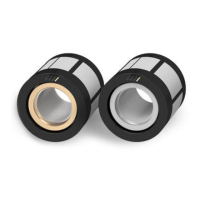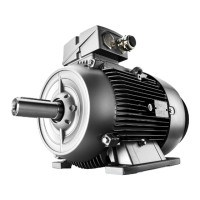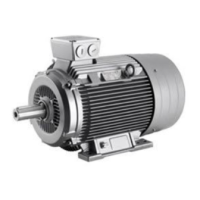As a result of the rotor design, a synchronous-reluctance motor has a restricted eld-
weakening range, and when compared to an induction motor, has a lower maximum
mechanical speed.
Figure6-6 Typical speed-power diagram for 1PH8 synchronous-reluctance motors
Note
When conguring the system, the poorer power factor when compared to induction motors
must be taken into account. This results in a higher reactive and/or apparent power at the motor
terminals, and as a consequence, the converter must be able to provide a somewhat higher
current.
6.3 Dierent rated points for induction motors
All 1PH8 induction motors can be congured based on a total of 4 characteristics and therefore
also 4 rated operating points. The rated points are also stamped on the motor nameplate.
For correct conguration, the line voltage and the line infeed are relevant for choosing the
characteristics and rated points.
Table 6-2 Denition of the characteristics and rated points:
Characteristics or‐
der
Converter sys‐
tem
Line voltage Supply infeed Remarks
1 SINAMICS 3 AC 400V Smart/Basic Line Module (SLM/
BLM)
Infeed with uncontrolled Smart/Basic-
Mode (converter output voltages up to
380V)
2 SINAMICS 3 AC 400V Active Line Module (ALM) Infeed with controlled active mode
(converter output voltages up to 425V)
3 SINAMICS 3 AC 480V Smart/Basic Line Module (SLM/
BLM)
Infeed with uncontrolled Smart/Basic-
Mode (converter output voltages up to
460V)
4 SINAMICS 3 AC 480V Active Line Module (ALM) Infeed with controlled Active Mode
(converter output voltages up to 500V)
Conguration
6.3Dierent rated points for induction motors
1PH8 SIMOTICS M main motors
212 Conguration Manual, 12/2022, A5E51895839A

